
By Ferry from Naoshima to Honshū
Leaving Naoshima
I've been on Naoshima for a few days, seeing the art and walking through the nice scenery. It's time to move on. First, though, breakfast at the Little Plum.
Salad, spicy tofu, sausages, scrambled eggs, a roll, and yogurt with jam.
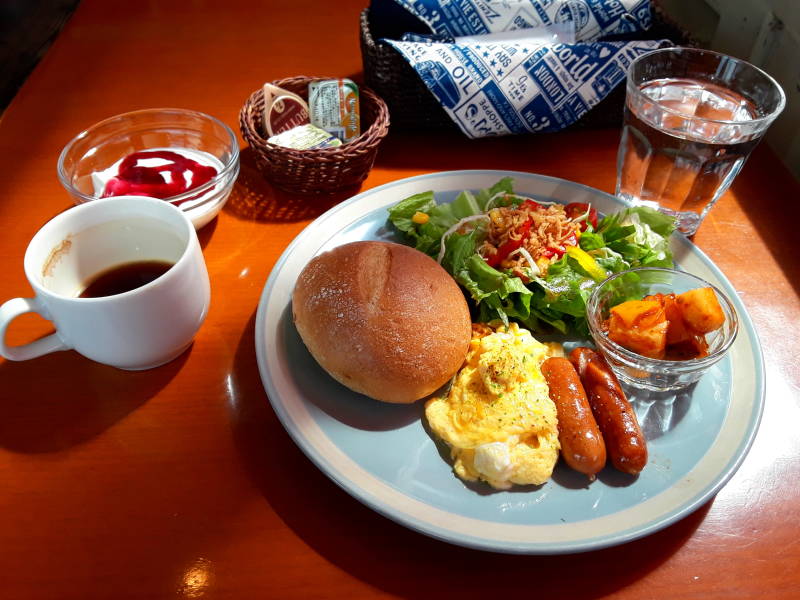
I went back to Domi Kowloon to collect my pack and check out, then walked the short distance to the ferry terminal. There are about a dozen daily round-trip ferry connections between Naoshima and Uno.


Most of the people waiting in line for this ferry were speaking French. The Art Islands, especially Naoshima, are very popular with visitors from France.

Naoshima to Uno
Off we go. There's the low, wide ferry terminal, mostly a roof with a glass-enclosed area at its center holding the ticket office and visitor's center.
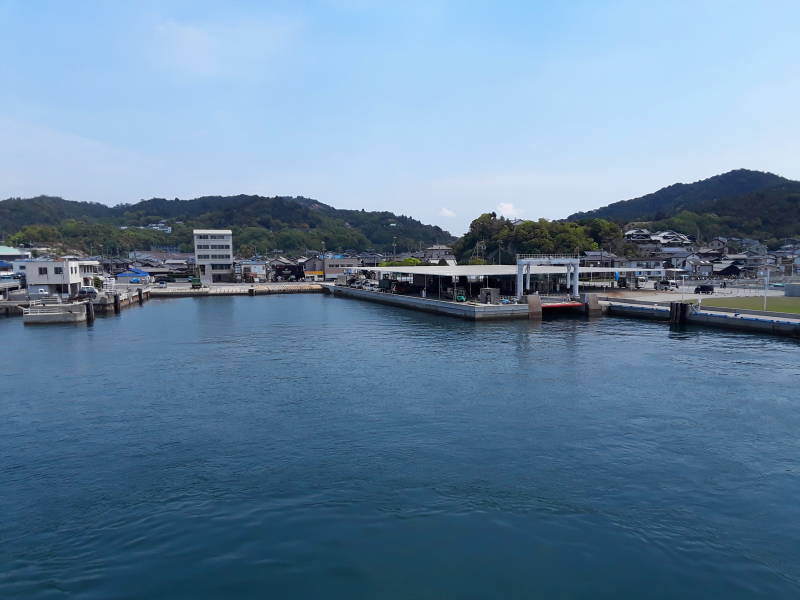
We see Uno almost immediately. It's a short ride on the ferry.
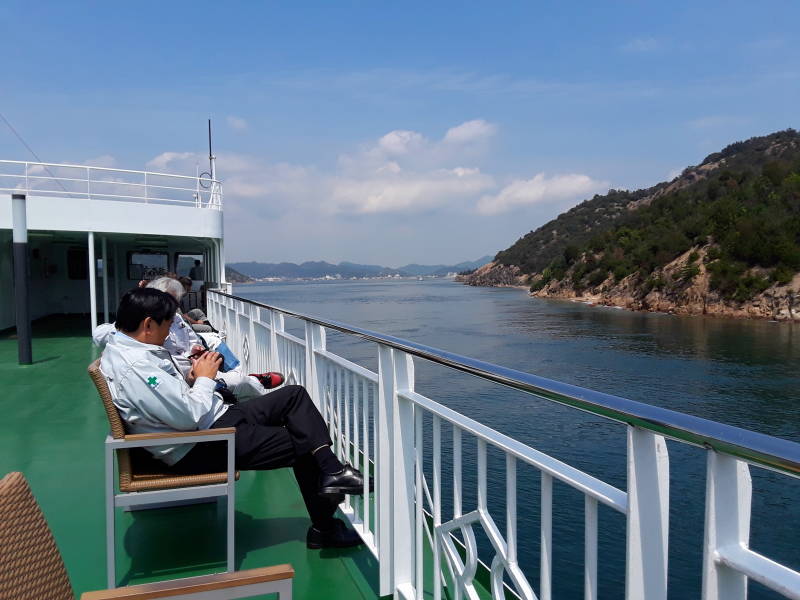
A large industrial area west of Uno hadn't been visible from Miyanoura.

The northern section of Naoshima is much more barren. This is the Mitsubishi Materials smelting plant.
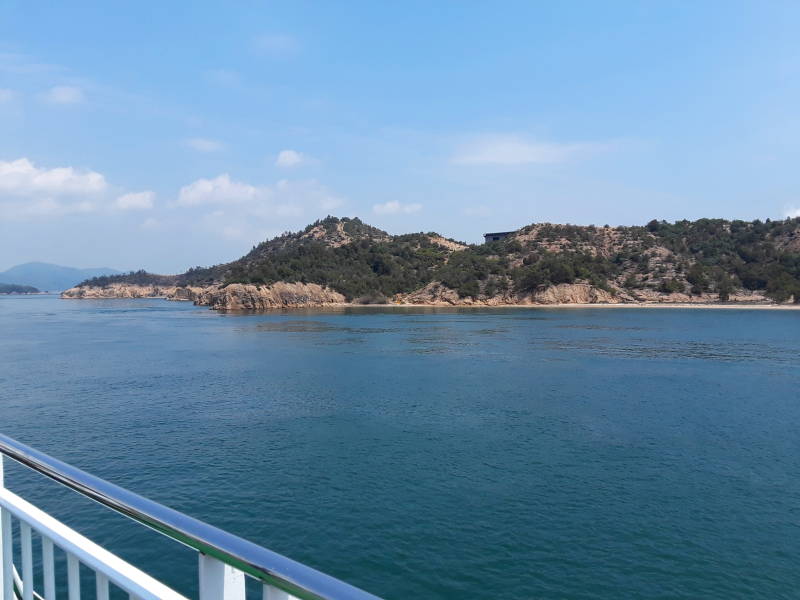
The Mitsubishi plant started operation in 1917. It processed copper ore from various mines in the region. A new smelting plant started operation in 1969, but it was still a heavy polluter.
In the 1990s the smelting plant converted to treating waste from other plants, and turning industrial waste into slag and fly ash that can be used as concrete aggregate.
Crushed automobiles and electronic equipment go into the plant. Some heavy metals including gold and silver can be recovered from the resulting fly ash stream.
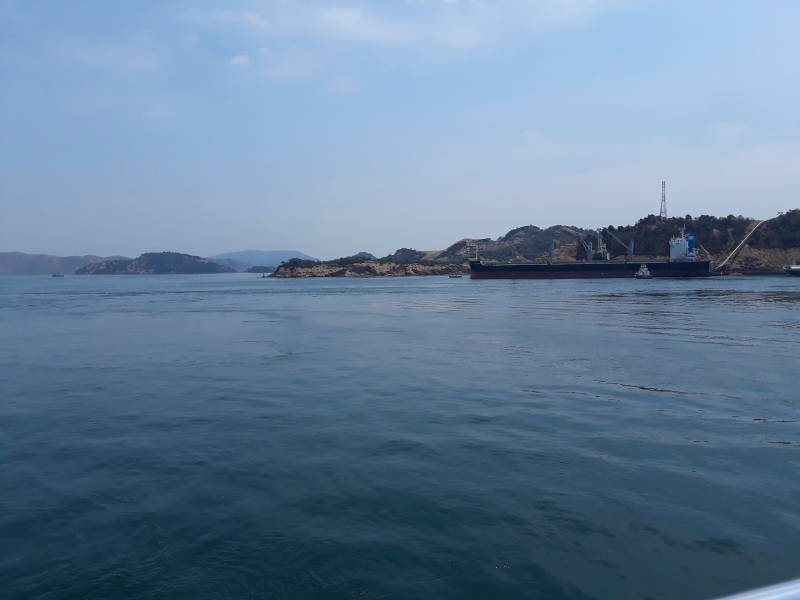
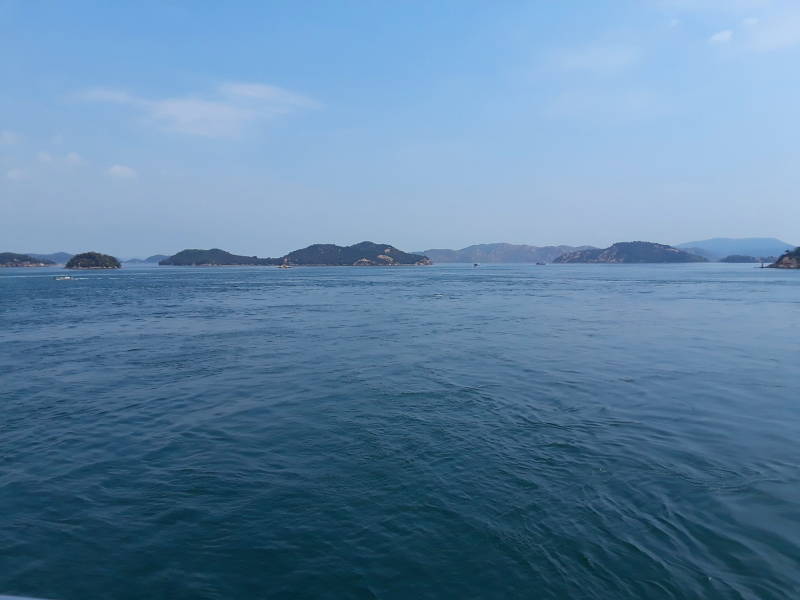
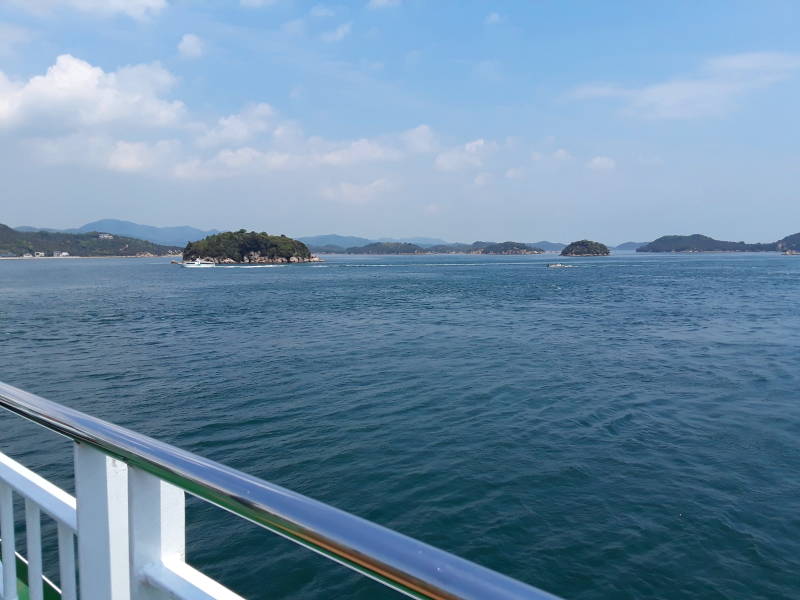
There are almost 3,000 islands in the Seto Inland Sea.



Arrival at Uno
Uno was constructed as a port for a railway ferry connecting Honshū and Shikoku. Its port was completed in 1909, and the ferry between here and Takamatsu started running in 1910.
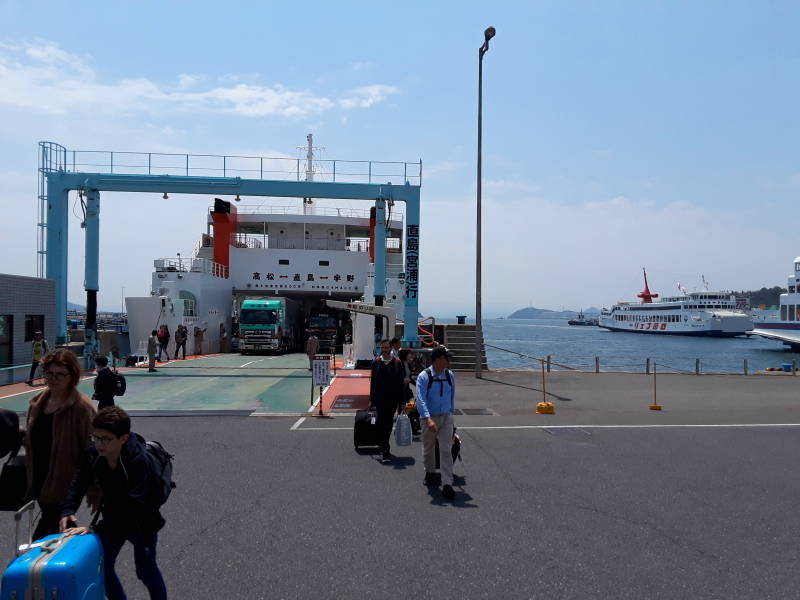
When the Seto Ōhashi Bridge opened in 1988, the direct Uno-Takamatsu ferry was discontinued. However, Naoshima and other nearby islands keep the ferry terminal busy.
There isn't much spare time. Make your way past the metal turtle, around the traffic circle, and into the original train station. Buy a ticket and get right onto the train to Okayama. If you miss that train, there should be another in about an hour.

From here I will take the train north to Okayama, then change to a Shinkansen west to Hiroshima.
The above is specific to Naoshima. Or maybe you want to explore other places in Japan.




































